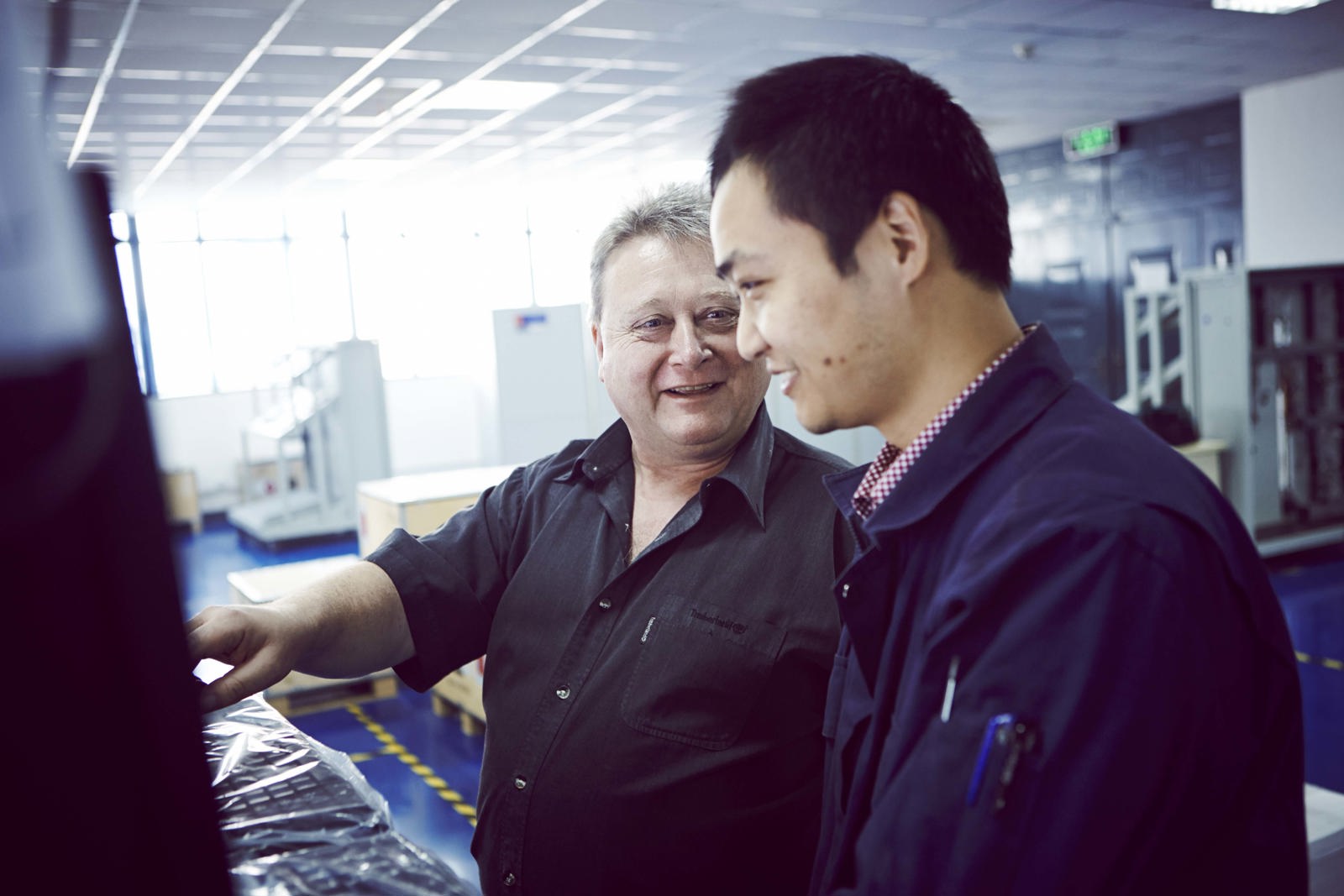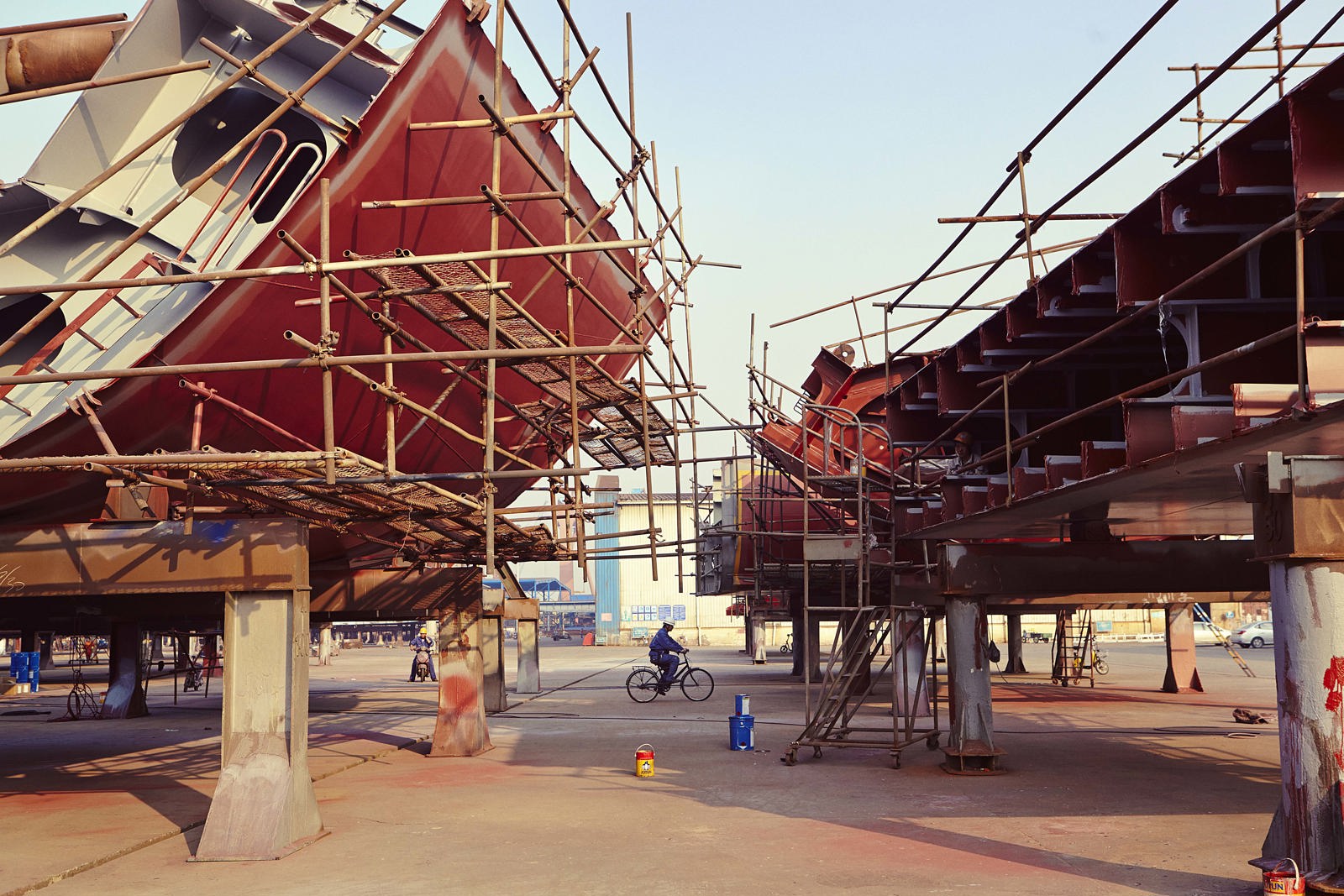
Kongsberg Maritime recently celebrated ten years in China. What started out with one office and 25 people in Shanghai in 2003, has now developed into more than 600 employees across four locations.
-
Text:CHRISTINA FJELLSTAD
Photo:EINAR ASLAKSEN
-
Ove Ronny HaraldsenGroup Communication Manager
China covers an impressive area of 9, 597, 960 square metres and has an approximate population of 1.4 billion. This constitutes a fifth of the world’s population. The country also has one of the world’s largest economies, which at least partly can be attributed to the maritime sector and the vast number of ships built in the country.
THE CITY BY THE SEA
There are several hundred shipyards in China and around 40 of these are located in Shanghai which, with 23 million inhabitants, is the largest city in China and has the world’s largest harbour in terms of tonnage. It is in this vast metropolis, appropriately named “by the sea” in translation, that we find the headquarters for Kongsberg Maritime in China - Kongsberg Maritime China Shanghai or KMCS. This was where it all started just over ten years ago. This was the first Kongsberg Maritime office to be opened in the country and is now the place of work for around 180 of the KM employees in China. It is located in the well-known business area of Pudong in a six-storey building. “KM has actually been active in China for much more than ten years. The very first technical service station was established here in 1999, but the first office did not open until 2003. The tenth anniversary for the office was celebrated on 28 October 2013 with an impressive event for employees and one for customers,” says Jin Ji, secretary to KMCS Director Kjetil Lund.

VAST PRODUCTION AREA
In addition to the six-storey office building, KM has premises for testing and assembly of products in Shanghai. However, an increasing amount of these activities will be moved to Zhenjiang, where Kongsberg Maritime’s largest facility in China is located, both in terms of number of employees and space. The production premises in Zhenjiang were completed in 2011 and represent a young addition to KONGSBERG’s 200 years of history. Despite being located approximately 219 km north-west of Shanghai, the town of Zhenjiang is easy to reach by express train, with departures all day long and a speed of just under 300 km/hour. You can actually reach Zhenjiang from Shanghai in as little as one hour. The two offices are therefore closely connected and a number of employees commute this distance. An efficient train ride later, we disembark in a hazy Zhenjiang, which is a small town in Chinese standards with its 2.7 million inhabitants. Kongsberg Maritime Zhenjiang Jiangsu (KMZJ) covers a tidy and systematic area of 25,000 square metres, comprising an office building, five production facilities, a canteen and a comprehensive parking area with charging stations for scooters.

The facility itself produces sensors for monitoring of machines and cargo. These products were originally manufactured in Trondheim among other locations, but as the major part of the market was in Asia, production was partly moved to China. The same applies to mechanical parts, adapters, distribution boxes, switchboards, transformers and consoles currently produced in Zhenjiang. These products are mainly for customers in China, Korea and other Asian countries, but also for the international market. “We carry out the entire production process for main switchboards and plugboards, from processing of the steel and painting to assembly and installation of cables,” explains Technical Director in Zhenjiang, Kjell Rønning, who provides a guided tour of the plant. “After assembly, the cabinets are tested and distributed to the customer. The cabinets are used for electrical distribution onboard ships. If there is an incident leading to power shortage, the system is designed to disconnect the least important system first, such as lighting in the cabins,” Kjell Rønning explains.
A REPUTATION FOR GOOD COMPANY CULTURE
In total, KMJC has been involved in 26 switchboard projects, comprising 1,272 cabinets in 2013. That same year, they also produced a total of 26,371 sensors. This is an impressive increase from 13,186 in 2011. The company was also involved in 112 FAT (Factory Acceptance Tests). In addition to production of sensors and switchboards, KMCJ recently started production of lead-in blocks for Kongsberg Evotec. The first order is for two PGS vessels. Of a total of four deliveries, two have been produced in Norway and KMCJ is responsible for parts of the two remaining deliveries. In addition, parts of the sensor component production for KM Subsea has been moved to Zhenjiang. Rune Hagen, General Manager for KMCJ, sees several advantages of moving parts of Kongsberg Maritime’s production to China.
“Firstly, the largest market share is located in Asia. Vessels for the merchant marine are mainly built in China and Korea. In addition, there are numerous major shipyards in China, Korea and Singapore building ships for the offshore market. Another positive aspect is that raw materials are less expensive here and it is a fact that the salaries in China are generally lower than in Norway. We also have access to highly qualified workers here, ensuring that our products are manufacture to the same high quality standards as those manufactured in Norway,” confirms Mr. Hagen.

Despite moving parts of the production from Norway to China, Rune Hagen believes it is important for KM to maintain close contact with the KM offices in Norway while taking into account local factors. “It is important to operate in accordance with the premises laid down in Norway, but adapt these to local conditions. We have to make sure that we continue to comply with the KONGSBERG values and our method of working. Our aim is to generate a culture in which we focus on openness and communication across all departments and areas of responsibility. Many Chinese are not accustomed to this, but over time, this has helped us achieve a reputation in Zhenjiang for a positive company culture. This has proved important for the recruitment of new employees,” confirms Mr. Hagen.

A POSITIVE OUTLOOK
Over the past ten years, the construction of vessels for the merchant marine has had a solid position in China, but in recent years, the offshore industry has increased considerably. In addition, the market for the merchant marine has changed. While numerous merchant vessels were previously built more or less as copies of each other, with the same systems onboard, today’s deliveries demand a higher degree of specialisation and planning. As an answer to this change, KMCS was divide into two departments in 2012, one for offshore and one for merchant marine. In addition, an increasing share of the production has been moved to Zhenjiang in order to cater for a higher level of specialisation. Increased market shares and number of deliveries means more work for the other departments in KM, both in China and worldwide. There is therefore no doubt that Asia in general and China in particular are important target areas for Kongsberg Maritime in the years to come. With a ten year success story resulting in four locations which have the capacity to take on sales, service, projects and customer support all the way to production, Kjetil Lund, Director of Kongsberg Maritime’s operations in China, and the more than 600 employees in his organization, are well prepared to meet any challenges the future might bring.
“KONGSBERG has truly made its mark in China, by delivering top quality from our facility in Zhenjiang, by winning increasing market shares within both offshore and merchant marine and by providing professional project support from the Shanghai office. KM’s activities in China have been very successful and the people who work for KM in China can look forward to a bright future,” concludes Mr. Lund.
